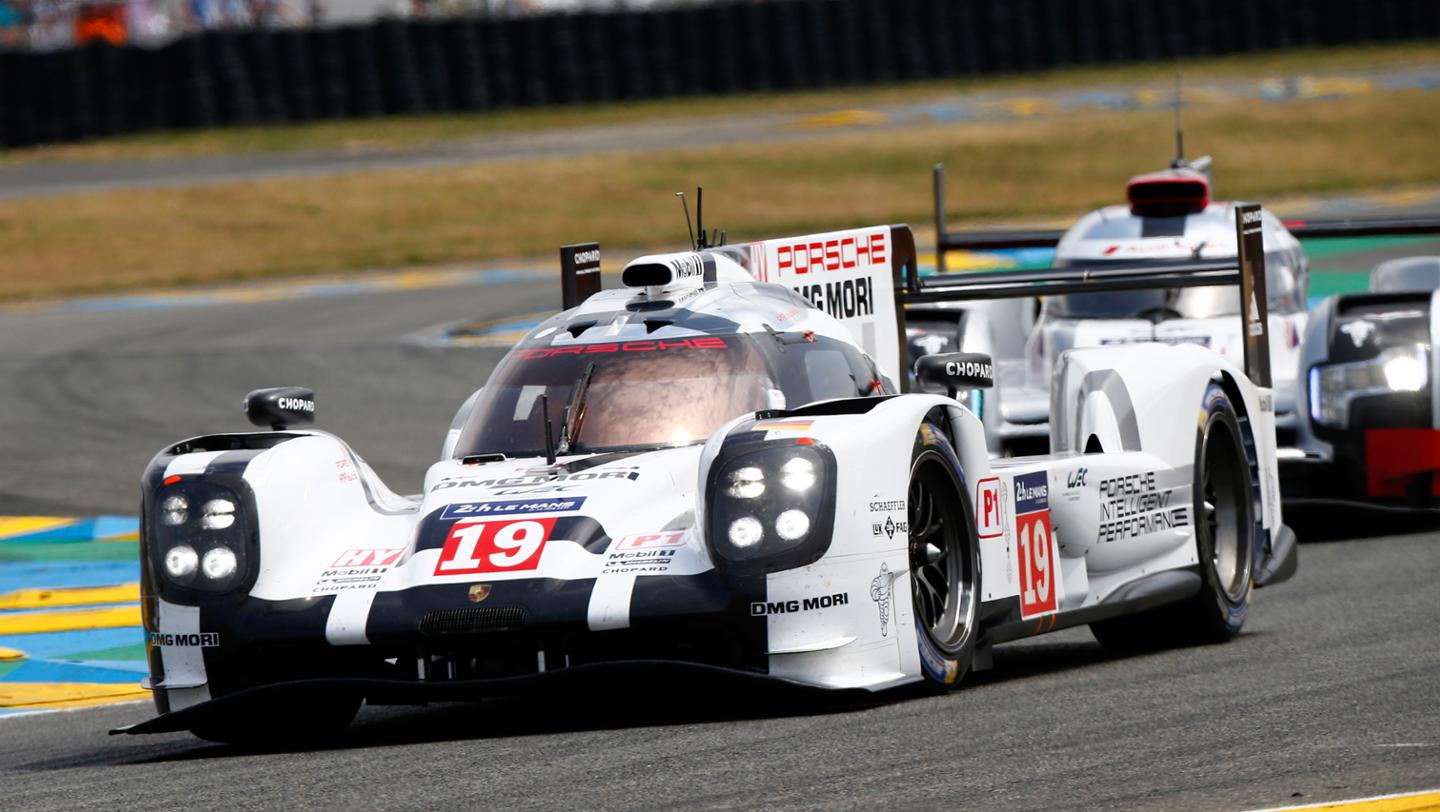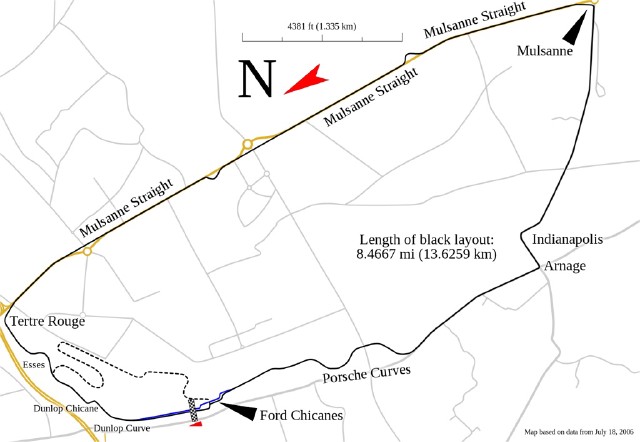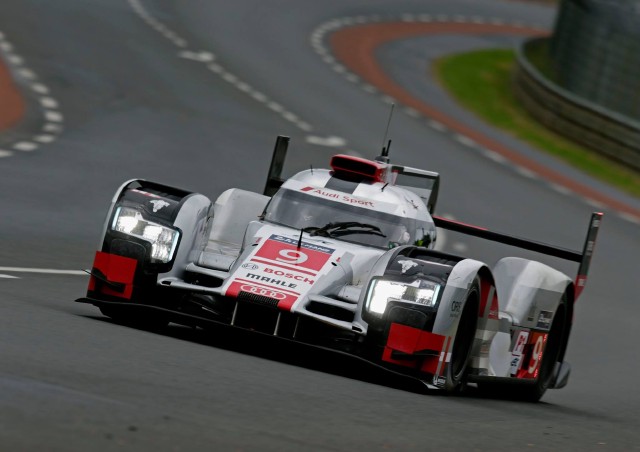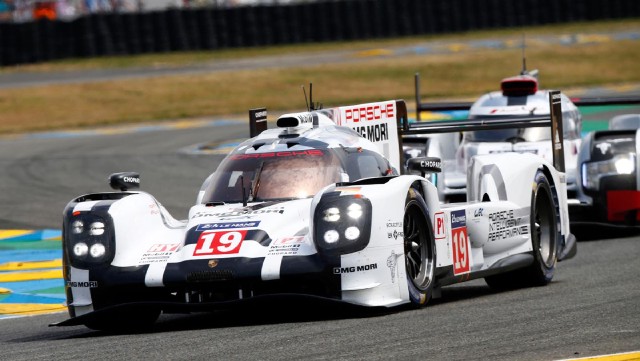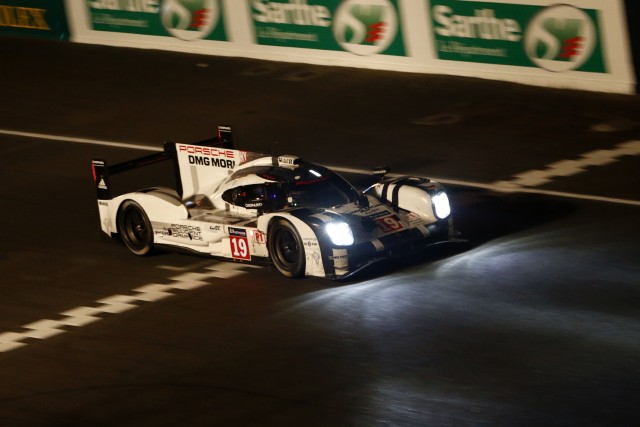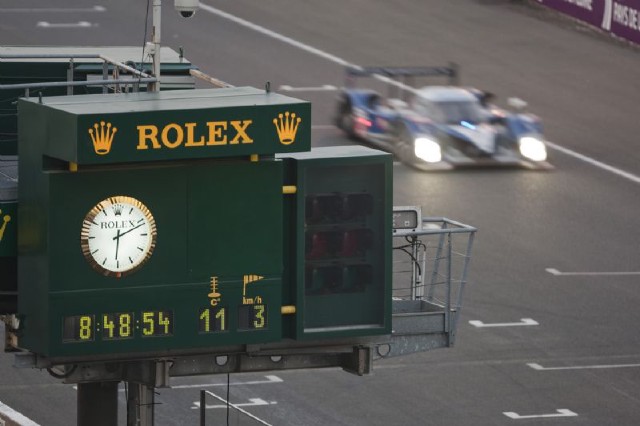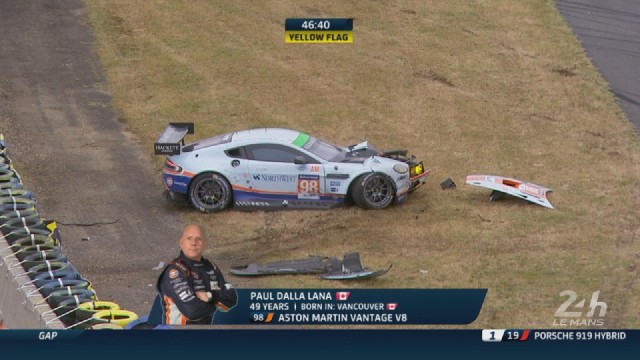Yesterday I was watching the 24 Hours of Le Mans, 2023 edition, when I realized, “wait a minute, I’ve blogged about Le Mans before …” Much to my POSSE horror, I realized that I had taken down my 2015-era blog without preserving its content, and that some of the content actually appeared to be worth preserving.
Actually, Cory Doctorow would make the point that ALL of that content is worth preserving, even it if seems cringeworthy or no longer relevant. My intent is to revive all my content from 2015, which will take a bit of effort (Squarespace export for Wordpress => Wordpress-to-Hugo import).
For today, though, since it’s Le Mans weekend, and since Le Mans 2023 is shaping up as an amazing year in the P1 / hypercar class, I’m bringing this post back first.
Le Mans, Unabridged
Originally Published September 02, 2015
Race time, 2:57 AM on Sunday June 14th, the middle of the night, pitch black pierced by laser headlights. 13 hours, 3 minutes to go. My time-shifted reality time is 7:37 AM June 23rd, a full nine days after les 24 Heures du Mans has finished. I’m actively ducking my normal news feeds, especially Zite, trying to avoid spoilers. After almost 11 hours of racing, the leading Audi and Porsche LMP1 cars are just seconds apart, trading the lead with every pit stop.
LMP1 stands for Le Mans Prototype Class 1, the fastest of the four Le Mans racing classes. The top LMP1 cars are capable of circling the long, winding 8.47 miles of the Le Mans circuit in less than 3:20, with top speeds over 210 MPH. For my money, LMP1s are the most amazing racing machines on the face of the earth.
Know that I’m a serious Formula 1 fan. I love F1 cars, their amazing speed (even faster than LMP1s), the technology they represent. I love the carefully sculpted F1 racing format, with its three-round qualifying on Saturday followed by an intense Sunday race. I love the drama of F1’s long 18-race season, with drivers and teams fighting it out over nine months for individual and team championship titles. Formula 1 is my favorite racing series.
My favorite single race, though, is the 24 Hours of Le Mans. Hands-down, no contest. Le Mans is a season’s worth of racing compressed into a single race. Cars that finish these brutal 24 hours will never race again—the punishment is so heavy that even the most robust components, down to the chassis itself, are beat up, worn out, no longer race-worthy. Le Mans demands a three-driver rotation, and even then drivers are pushed to the point of physical exhaustion and dehydration. Pit crews and garage mechanics face their own marathon: besides rapidly rendering 24 hours of fuel-and-tire stops, they must be prepared to diagnose and fix even the most seriously broken cars, under the highest-intensity, the-clock-is-ticking circumstances. Race engineers like Audi’s Leena Gade might have the toughest job of all, because unlike drivers, they’re on duty for all 24 hours. This is 24 hours of racing insanity.
Le Mans cars are likewise in a class of their own. Even the commoners of Le Mans—the Porsche 911 RSRs and Ferrari 458 Italia GT2s of the GTE classes—are sexy beasts that wind up with a sound like a turbojet on the long Mulsanne Straight and would turn heads on any road in the world. The LMP1s are the pinnacle, though, truly the sexiest cars on the face of the earth, especially as they fly through a difficult corner sequence like the sinuous Porsche Curves, moving so fast it seems like you’re fast-forwarding the video. As sports car prototypes, LMP1s have beautifully enclosed bodywork and jet-aircraft-style cockpits. The LMP1 look is sleek spaceship, a vast contrast to the aero-deformed, exposed-wheel F1 car.
Racing technology a big part of the appeal for me. I love Formula 1 for its tech, but here again, Le Mans and LMP1s rule the roost. The three top LMP1 teams—Audi, Porsche, and Toyota—all use hybrid technology. Audi’s hybrid power isn’t battery-based, though: the R18 e-tron quattro instead uses a flywheel accumulator which spins up during braking, storing up to 700K Joules of energy and delivering an extra 272 horsepower on demand. Audi has likewise innovated on its internal combustion engine: starting in 2006, Audi made an unprecedented switch to diesel power. Besides delivering amazing performance and fuel economy, the diesel powerplant is incredibly quiet; the loudest noise you’ll hear on the in-car feed is the flywheel spinning up, with engine noise just a low background throb. Using such unconventional power sources, Audi has been dominant at Le Mans, winning 10 of the last 11 years.
Porsche is the most famous name in Le Mans racing, a name that had been absent from prototypes for 16 years until their return last year with the 919 Hybrid. The 919 is a more conventional hybrid pairing than Audi’s, with a turbocharged 2.0 liter V4 gasoline engine complemented by a lithium ion battery system. Conventional or not, the 919 is a powerful rocketship capable of cranking out almost 1,000 HP, significantly more than Audi’s combined 840 HP and enough to easily win this year’s LMP1 pole. But Les Mans is endurance racing at its most fundamental, and despite the Porsche’s power advantage and qualifying pace, it was Audi who started this year’s Le Mans as heavy favorites, having handily beaten the 919s in two key up to Le Mans. It normally takes years for a new team to master Le Mans’ triple requirements: speed, reliability, and teamwork. 2015 was just Porsche’s second year, so winning seemed highly unlikely.
Race time, Sunday morning 3:50 AM. 12 hours 10 minutes to go. Time-shifted time, 8:41 PM on June 25th, dusk in Winnetka, 11 days and change after the finish. It’s shaping up to be a great race, perhaps as exciting as the classic Audi - Peugeot duels of 2006-2011. Porsche’s #19 car has pulled out a slight lead, enough to remain in front event after pit stops, although in a 24 hour race this is the thinnest of margins, one that could evaporate with the slightest mishap such as a punctured tire.
And yes, I’ve really watched it all, 11 hours and 50 minutes of racing, transitioning from bright afternoon sunshine, through the fading light of a beautiful evening, and now into the dark lonely hours past midnight. The race is not even halfway over, and already I’ve committed more viewing hours than an entire season of Game of Thrones. By the time I’m done, I’ll have watched 24 full hours, time-shifted to fit my spare viewing hours, over an elapsed period of 18 days, all the while staying clear of my usual racing news sources in an attempt to avoid spoilers.
That’s a serious commitment of time and focus. A similar commitment, applied to cross-country driving, will get me from Winnetka to Taos, New Mexico, including a side trip to Alliance, Nebraska to visit that automative wonder of the world, Carhenge. What motivates me to watch a single sporting event, a single race, for 24 full hours?
Watching Le Mans unabridged is sublime and memorable, in the same way that taking a cross-country journey in the company of great friends is sublime and memorable. It’s not a quick-fix adrenaline rush like the best of Formula 1 races. It’s not a quick anything. Instead, it’s a 24-hour stream of small wonderful moments, enjoyed in the company of good friends. Headlights coming on in the beautiful dusk, the screech of an Audi’s tires as it threads the Porsche Curves, chaos in a GTE garage after an unfortunate meeting with an Armco guardrail, the one-of-a-kind growl of the Corvette C7.R’s 5.5 liter V8, the intense focus of an LMP1 driver cranking out sub-3:20 laps in the pitch black of 3:00 AM. For me, the Le Mans experience can’t be condensed; try to grasp the “good parts” and you lose the whole essence of the thing.
Race time, Sunday, 6:44 AM, almost 15 hours into the race. It’s getting light. 9 hours 16 minutes to go. Porsche’s #19 car has stretched its lead over the #7 Audi to a pit-stop-adjusted 50 seconds, still a tight margin at Le Mans but definitely a concern to Audi. There’s an interesting Formula 1 connection to the #19 Porsche: German Nico Hülkenberg, an active F1 driver for Force India, is one of #19’s co-drivers. Hülkenberg is a Le Mans rookie, as is his Kiwi teammate Earl Bamber. Their third co-driver Nick Tandy has raced Le Mans twice before, but in the GTE Pro class, two large steps below LMP1. It’s a surprise to see #19 leading the Porsches, let alone the race.
For almost 15 hours I’ve enjoyed traveling in the company of my good Le Mans friends. Endurance racing in general, and Le Mans in particular, has the informal feel of “Hey, let’s do something insane! Screw it, let’s drive for 24 hours straight and see who can go the farthest!” It’s less like a formal contest and more like an all-night crazy-fest. And I get to be an integral part of the craziness: my role is to watch insanely—all 24 hours—two full seasons of The Wire.
Among those I’m intimately connected with are the head crazies, the drivers. Le Mans’ deep camera coverage brings me right inside their world for 24 hours, whether they’re two hours into a four-hour stint in their LMP1 cockpit or dozing in the garage. In the tightly-produced Formula 1 format, my exposure to the drivers is carefully scripted, with handlers always hovering nearby. In F1, the closest you’ll come to an informal moment is immediately after the race, when the top three finishers relax and rehydrate before the podium ceremony.
At Le Mans, in contrast, informality reigns. 24 hours is long time, and even if tight production and careful scripting were desired (they don’t seem to be), it would be prohibitively expensive to do. Also, because Le Mans drivers are part of a 3-person team, they’re actually driving just 1/3rd of the time. The 2015 edition of Le Mans had 56 cars, meaning 174 drivers. So at any particular point during the race, 116 drivers are not driving, but instead are hanging out around the garage, watching the race just like me, maybe grabbing some food and a couple hours of sleep, but mostly hanging out. Oh look, there’s André Lotterer from the #7 Audi, relaxing in the garage with his mechanics, watching the race feed and his car’s telemetry data. Wow, there’s Patrick Dempsey, yes, that Patrick Dempsey, who just finished his stint in the #77 GTE Am car. Casual, unscripted interviews are happening continuously. One of my favorites this year was with Anthony Davidson, co-driver of the #1 Toyota TS040 Hybrid. Toyota Racing was a top contender in 2014, winning the World Endurance Championship, but in 2015 Porsche and Audi both pulled significantly ahead. Davidson was fresh out of the #1 Toyota, having just crashed twice on a single lap as he desperately tried to match the pace of the leaders. He was devastated, brutally honest about his mistakes, and apologetic to his fans and team. The time lost for repairs ended any hopes Toyota had for a top finish. No handlers, no scripts, up close and personal.
Race time 12:49 PM, a bit over 3 hours to go. For me watching in Winnetka, it’s dinner time on July 2nd, 18 days later. Both the race and my time-shifted viewing are entering their final push. The drivers who take over now will bring their cars home.
Finish at Le Mans occurs when (a) the official Rolex 24 hour race clock finally counts down to 00:00:00, and (b) your car crosses the finish line, having completed its last 8+ mile lap in six minutes or less. Even if your car runs for 23 hours and 55 minutes, if you fail to cross the finish line, or are limping along at slower than a six minute pace, you are completely disqualified, expunged, shunned, purged from the classification list as if you had never entered.
About four hours ago, disaster befell Audi’s lead #7 car: the rear engine cover broke loose and shredded, resulting in engine damage and a lengthy garage visit. This gave the #19 Porsche a more comfortable one-lap lead. Since then, the Audis have continued to suffer reliability problems and even a drive-through penalty for “disrespecting the slow zone.” Porsche’s cars have meanwhile been rock-solid and now hold the top two spots, with #17 up to second place.
The Le Mans race commentators are another big part of my communal crazy-fest. It’s an hilarious, chaotic, ever-shifting cast of characters, with new voices suddenly appearing as their predecessors hit the wall of exhaustion and slip away for food and sleep. They’re enthusiastic and knowledgeable, many being former Le Mans drivers, people who can speak from personal experience about what it’s like to be in the car during Happy Hour, the golden hour just after daybreak when the track surface is rubbered in and sticky, and the cool air maximizes engine performance. They talk me through amazing laps, horrifying crashes, miraculous pit work, amateurish moves by amateur drivers, and hilarious moments (“André Lotterer there, taking on a banana.”) I feast on insider trivia—which teams have the best hospitality catering, what particular drivers choose to eat during the race (in one horrifying case, curried hot dogs).
Best of all, they share about Le Mans, the Grand Lady that even the world’s best drivers can never take for granted. Like life, Le Mans is fundamentally about endurance, about taking hits and getting beat up and getting it started again and limping back to the pits and intense recovery work and speed tape and surviving and finishing. It’s about yellow flags and safety cars and getting a lap down and getting back in the groove and unlapping yourself and retaking the lead when it’s the other driver’s turn for misfortune.
Race time 3:53 PM, less than eight minutes remaining, time-shifted to 9:09 PM July 2nd in Winnetka. Nico Hülkenberg is back at the wheel of the #19 Porsche and has an almost-comfortable one lap lead over his Porsche #17 sister car, two laps ahead of the #7 Audi.
Hülkenberg is still flying, to the great discomfort of his team, who try to reel him in over the radio, “Nico, you can take it a lot more easy, repeat, you can take it a lot more easy.” If Nico can hold it together for the last eight minutes, he’ll become the first active Formula 1 driver to win Le Mans since Johnny Herbert in 1991.
The Audi garage is subdued. The unbelievable does still happen at Le Mans—just minutes earlier, in the GTE Am class, the #98 Aston Martin, running with a full two-lap advantage, crashed out of the race, handing the lead and eventual win to the #72 SMP Ferrari. But the Audi team senses that, with just minutes to go, and two Porsche 919s running fast and reliable well up the road, 2015 won’t bring another miracle win. Dr. Wolfgang Ullrich, Audi Director of Motorsport, walks over to the Porsche garage and offers congratulations.
Race time, a bit past 4:00 PM. The official Rolex 24 hour race clock has counted down past 00:00:00. Nico Hülkenberg has finally slowed down a bit and convoyed up with the #17 sister Porsche to cross the finish line together.
Another historic, magical Le Mans is in the books. Best consumed unabridged.

